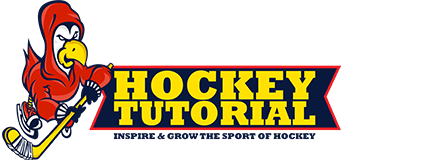Whether you are an experienced skater or not, you are aware that a strong hold on the ice is necessary for speed, balance and power. You get this hold by using the edges of your blade, shifting your weight onto the inside or outside edges
The inside edge is the inner side of your blade (on your right skate it is the left edge of the blade)… and the outer side of the blade is your outside edge (on your right skate again, it is the right edge of the blade).
Make sure you apply downward pressure into the middle of the blade, getting as much of it as you can in contact with the ice. Too much pressure to the front/middle of your blade (toward the toe), will make you come off the edge and lose your balance. And likewise, too much weight to the back of the edge (toward the heel) will cause you to lose momentum (and balance).
Forward strides using your edges properly
In the Forward Stride, you should try to start each push on one foot, firmly planted on an inside edge. The ability to maintain that hold while pushing through the ice for a long enough period of time is one of the most important elements in the quest for more speed, balance and control.
At the same time, you will want to use all of your bodyweight in every push you make. The more bodyweight you get centred over the edge, the more power and thrust you will get on each stride.
In order to get all of your bodyweight centred on the inside edge, it is necessary that you bring the other foot back so it is directly under your body, that gives you the ability to shift your weight properly to the pushing foot.
Forward inside edge
Inside Edge Drill
Techniques:
- The drill goes from one goal line to the other.
- Start with a couple of forward strides to build speed.
- Then, while facing the boards to your right, ride your right inside edge around forming a half circle until you are ultimately facing the boards to your left.
- Your left foot should be tucked in behind your right skate heel to maximize the grip of the inside edge (centre your weight directly over the edge).
- Once you are facing the side boards on your left, snap the right leg to full extension (this will build up speed and momentum), switching to the left inside edge.
- Now, ride the left inside edge for a half circle, until you are facing the side boards on your right again and then push the left leg to full extension, again building momentum to switch to the right edge.
- Keep changing edges and building speed (while not shortening the time you are on the edge on one foot) until you get to the far goal line.
- Variation: Do the drill to the redline and at the redline skate full speed to the far goal line, making every attempt to apply the edge drill into your stride.
Your Body Positioning in the Drill
- With the eyes forward, lean the upper body forward with the back of your helmet in front of your glide knee (don’t hunch over or look down however).
- Bend the knees deeply to get the most out of your muscles in your legs.
- Roll the skate, at the ankle, halfway to the ice (45°) for proper grip.
- Apply downward pressure into the middle of the blade (not the toe or heel), so the edge will hold throughout the turn.
- Keep the other skate off the ice, tucked in behind the skate that is rolling on the edge (maintaining a narrow base)… this will allow you to hold 100% bodyweight throughout the turn.
- Be sure not to bounce up and down (we call it yo-yo skating)… stay at one level throughout the exercise.
What is Counterbalancing?
Believe it or not, when attempting to improve your skating, falling down is an extremely beneficial tool. It shows you exactly when you have gone too far and where you have lost control. This is commonly known as breaking through the comfort zone.
it is very important that you begin to use your edges the way they were intended. To do this, you will definitely need to have an understanding of what I like to call Counterbalancing.
Counterbalancing, in skating terms, means to shift your upper bodyweight in the opposite the direction of your edges. For example, when you fully lean on one edge in one direction you must counter this action by shifting your upper bodyweight in the opposite direction (still keeping your shoulders level and parallel with the ice).
If you lean too much of your upper bodyweight in the same direction as your edge and the angle of the edge becomes too extreme, it will almost certainly slip out from under you and cause you to lose power or fall over.




